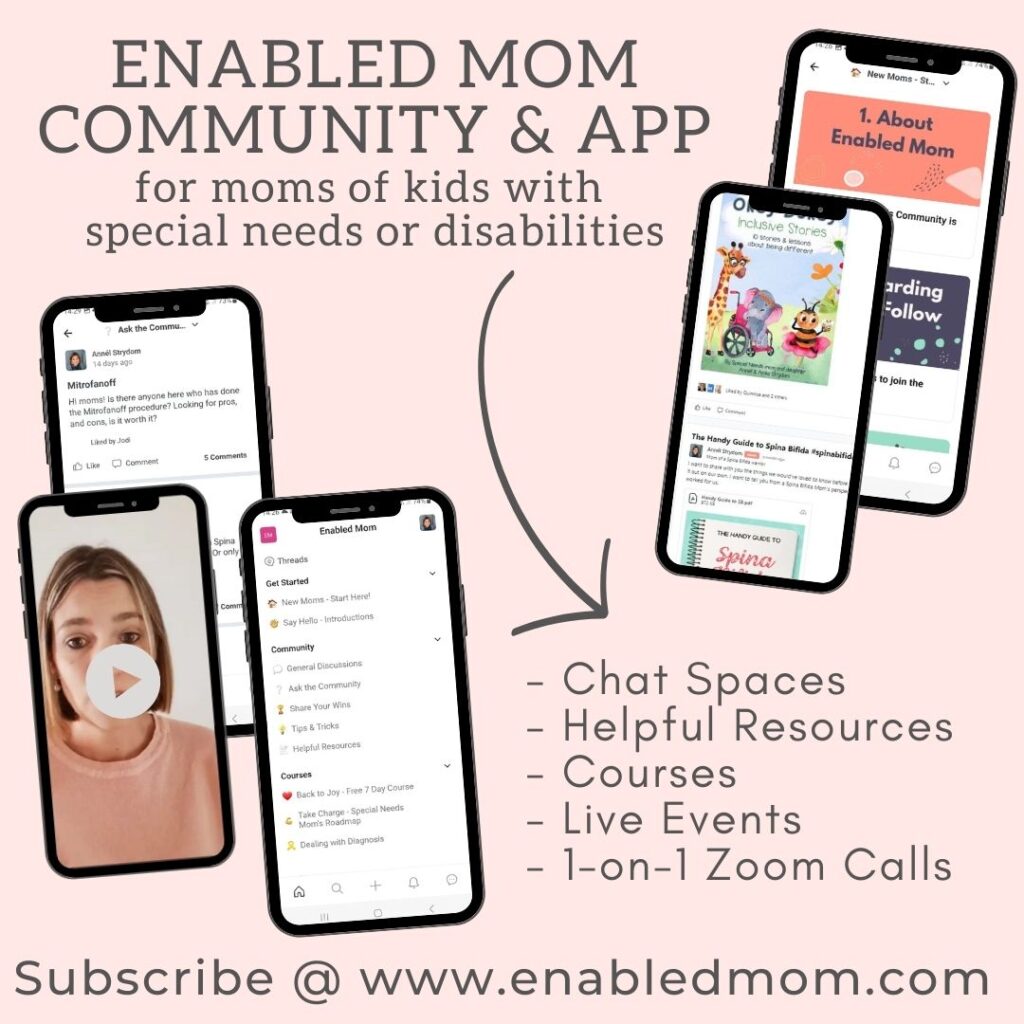As a family of 4, we’ve traveled the world full-time for three years with four suitcases, four backpacks, two kids, and our daughter’s wheelchair. From the day Anika was born, we decided never to assume that something “can’t be done” unless we’ve tried it out. Life’s too short to miss out on adventures!
We decided to try out Special Needs Family Travel for three months, and it worked out so well that we continued traveling while working and schooling from all over the world for three years! We’ve been to several different countries and took many long (and short) flights through France, Belgium, Netherlands, Luxembourg, Ireland, Mauritius, and 18 states of the USA.
Here are some tips and tricks we’ve learned along the way which will help make “Flying with Wheels” easier for other wheelchair users in the future. Of course, I’ve written this from a mom’s perspective, but I’m sure some of these tips will be helpful to adult travelers who use wheelchairs!
1. Book Special Assistance in advance
Even if you can manage with the wheelchair on your own, remember that you’ll have your hands full with boarding passes, keeping the family (if you’re traveling with your family) safe and together, hand luggage & figuring out where to go! Having special assistance also helped us skip most lines, and porters usually knew the shortcuts through the big, busy airports.
2. Call 24 Hours before your flight to double-check the details of the booking
Call the airline 24 hours before your flight to ensure they have all the necessary details to make your flight as smooth and enjoyable as possible. Double-check your seat numbers for accessibility and confirm that somebody booked special assistance, which is reflected in the system.
3. Tagging the wheelchair
When you check in, ask them to tag the wheelchair frame. Some wheelchair handles will be removed for storage, and wheels may be removed to save space, so the frame is usually the safest bet. Also, double-check that your destination and the wheelchair’s destination match up!
4. Make sure you get to the airport on time
“In time” when you fly with a wheelchair means early! Make sure you are there with plenty of time to spare so that you’re not in a rush. Being early will also give you time when you check in to ensure they have everything in place on their side.
5. Request the use of an aisle chair
If you can’t walk a short distance on your own to get from the airplane door to your seat, request the aisle chair in advance. It works well to get to your seat without hurting yourself or the people assisting you. Airlines have trained staff members who can help you transfer onto the chair if you can’t do it alone.
6. Ask them to keep the wheelchair in the cabin
If the airline allows it, take your wheelchair to the airplane door, move over onto the aisle chair, and ask them to keep the wheelchair in the aircraft cabin instead of in the airplane cargo hold. That way, the chances for damage are less, and if you have a stop-over, it can easily be accessed and taken out to use during your stop-over.
7. Ask the airline to pre-board
This will give you more time and space to get to your seat without other passengers on board. It will also be easier to get the aisle chair out of the aircraft after you’ve been seated if the other passengers are not in the airplane yet. Ensure the staff realizes that pre-boarding means getting onto the airplane BEFORE the other people board. Some airlines will let you board first, but with the rest of the passengers right behind you, which won’t necessarily help!
8. Remove detachable items from the wheelchair if possible
Whenever possible, remove the wheelchair’s cushion, seat cover, cup holder, detachable third wheels, etc., before they store the wheelchair. In that way, fewer things can break or get lost. If you use a specialized cushion for support or comfort, it might also be better for you to sit on the cushion on the airplane seat.
9. Fold your wheelchair yourself – or tell the staff how to
As soon as you’re seated on the aisle chair, fold your wheelchair yourself, or tell the staff how to fold it if it doesn’t have a rigid frame. There are many types of wheelchairs, and they fold in different ways, so the risk for damage will be lower, and you will save the staff some effort and time as you know exactly how it folds! You can also take a strap to tie around the folded chair if the wheelchair has no strap.
10. Using the bathroom/restroom
Remember that airplane restrooms are small, difficult to get to, busy, not hygienic, and highly uncomfortable. There are many ways to manage incontinence during a flight, so I highly recommend you consider your options beforehand. If you need to use the bathroom/restroom during the flight, ask the cabin staff to use the emergency medical area (more floor space with a curtain for privacy). Also, remember that you can request the aisle chair again during the flight if necessary.
Different airlines might have other procedures and policies, but we’ve found that the tips above work in most cases with most airlines.
The bottom line is that you know your condition and your needs best, so the golden rule is to ask and never take “No” for an answer… at least not on the first three attempts 😉
Some extra tips received from Enablers in our community:
Put an Apple Air Tag (or Android equivalent) somewhere on the chair. Mine is sewn into the back pocket. It will ping pretty quickly once you land. Be aware you sometimes get a “left-behind message” if you turn your phone on before they take it off the plane. I also strap down my chair to make it easier to handle and reduce the risk of damage. It also stops the cushion from getting lost. – Megan Farr
We print up and laminate signs attached to the backrest( zip tied) explaining that the chair needs to be returned to the cabin door on landing, attach contact details and any directions on using the chair’s brakes, if it can be folded (and how), if it is a rigid chair and has to remain upright, etc. We also contact the senior cabin crew to ask the captain to advise the ground crew at landing to remove the chair and return to the cabin door ASAP. We also have translated signs done in whichever country we are heading to. – Victoria Lascelles-Twiss
We also keep the padded part of the seat to sit on the plane seat for a more comfortable ride. The more padding the better for my son’s case. (Also saves from losing that). We also put all attachments in the overhead compartment so nothing gets lost an in-transit. I have a trusty pillowcase (or the like) to put all my “extras” into when boarding. – Ange Moon Huehnergard
For airplane travel, I pack all removable wheelchair parts into a hard shell medium-sized suitcase and ALWAYS sit on the cushion. I use an easy stand chest strap to hold me against the back of the seat, and children’s bucket stilts tied under my feet b/c I’m short. – Christina Ulmer

![Travel_Tips_when_flying_with_a_wheelchair[1] Travel_Tips_when_flying_with_a_wheelchair[1]](https://enabledmom.com/wp-content/uploads/elementor/thumbs/Travel_Tips_when_flying_with_a_wheelchair1-q5i3vqprehr9qvzu0jhx39e2i2fpcrmljpf7v9bgbc.jpg)



7 Responses
Great tips Annel! I am an ambulatory wheelchair user. I use a fold and go wheelchair that I gate check. We have been travelling for the last 10 years and have had some very interesting experiences with the airlines. including being left on a plane in Athens. They were starting to board the next flight when they finally brought the vehicle to get me off the plane. I have also been carried up and down the airplane stairs by a paramedic. Even with a lot of communication things can go sideways.
Hi Edward. Thanks for your comment! Oh my goodness, you almost scored a free flight 😉
One key tip is the tagging of the chair to be brought to the gate.
Also, I absolutely refuse to sign the disclaimer about damage to the chair. This raises the attention levels of the check in staff but has never stopped me boarding.
I also check that the plane has an on board wheelchair , essential for bathroom visits.
Oh and finally, note the different configurations of aircraft disabled bsthrooms. I have had to advise aircrew a number of times on how to co
nfigure the bathrooms for wheelchair access. This is especially true on 787 planes.
Hi Alan! Thanks so much for these. If you don’t mind, I’ll add it to the post?
Thank you for sharing these tips. Air travel can be very intimidating especially when they take the wheelchair and I’m hoping I get it back in the same condition.
Hi there. I hear you, and wheelchairs don’t come cheap! May your future travels be full of amazing experiences and no damage or losses 🙂